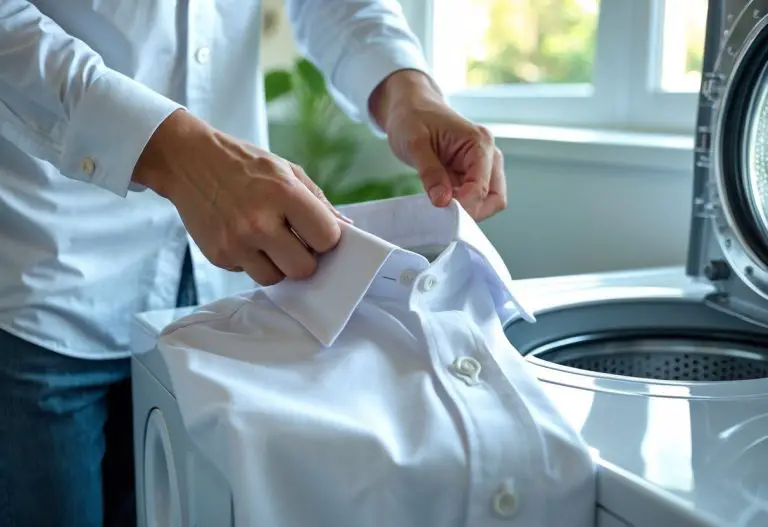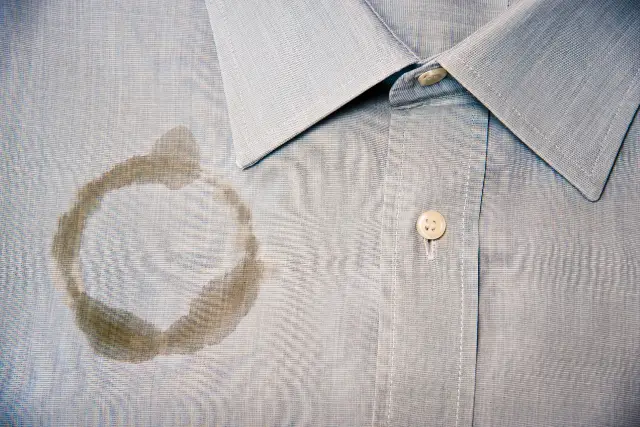Ever wondered if you should button shirts before washing? It’s a simple question that can make a big difference in the life of your shirts. Buttoning shirts before tossing them in the wash helps maintain their shape and prevents damage to other clothes.
Leaving buttons open might seem easier, but it can lead to stretched fabric and tangled laundry. Taking the time to button up can save you trouble and extend the life of your favorite shirts.
Key Takeaways
- Buttoning prevents damage and maintains shape.
- Open buttons can lead to stretched fabric.
- Proper care extends shirt’s lifespan.
Should You Button Shirts Before Washing?
Buttoning shirts before washing can affect button durability, fabric stress, and garment shape. It also influences how clean your shirts get.
Impact on Button Durability
Button damage is a concern when washing shirts. If you button your shirt, buttons may be less likely to snag on other items. This can prevent them from popping off or breaking.
However, keeping them buttoned may increase tension on the buttons. This tension might lead to cracking or loosening over time. Always consider the type of buttons on your shirt. Plastic buttons are often more fragile than metal ones, necessitating extra caution during washes.
Effects on Fabric Stress and Garment Shape
Buttoning shirts can help maintain their shape. It keeps the seams aligned and reduces fabric twisting. However, it may also cause stress on the fabric.
When the dress shirt is buttoned, the fabric is pulled tightly, which could weaken fibers over time. This stress might lead to tearing, especially with thinner fabrics. Checking care labels for fabric information can help you decide the best approach.
Benefits for Overall Cleaning Performance
When left unbuttoned, dress shirts can move more freely in the wash. This ensures that every part of the shirt is cleaned properly. But zippers and hooks from other clothes might snag on the unbuttoned shirt, potentially causing damage.
Buttoned shirts may trap dirt in folds. To maximize cleaning performance, consider using a protective laundry bag. This way, you can protect buttons and let the shirt be cleaned effectively.
Best Practices for Washing Shirts

To ensure your shirts stay in great condition, you need to pay attention to specific washing practices. Focus on what the care label recommends, use wash bags when needed, and adjust water temperature and machine settings.
Reading and Following the Care Label
The care label is a small tag inside your shirt that holds important washing instructions. Pay close attention to what it says because following these guidelines helps shirts last longer and look better. There might be symbols or words telling you how to wash, dry, and iron the shirt.
If the label suggests hand wash or dry clean, it’s best to check the label and follow those dress shirt care instructions. For machine washing, refer to the label for recommended water temperatures and settings. Ignoring these can lead to fabric damage or shrinkage. Always remember, the shirt manufacturer provides these details to help you take the best care of your clothing.
Using Wash Bags for Extra Protection
Wash bags are helpful when washing delicate shirts or those with unique designs. They act as a protective barrier, reducing wear and tear during washing. If you have shirts with buttons, use a wash bag to prevent button damage from other clothes.
Put your shirt inside the wash bag and zip it up or close it securely. Using wash bags can also keep your shirt from getting tangled with other clothes. They come in different sizes, so choose one that fits your shirt comfortably without squeezing it too tightly.
Water Temperature and Machine Settings
Choosing the right water temperature is key to maintaining shirt quality. Cold water helps preserve colors and reduces shrinkage, making it ideal for most shirts. On the other hand, hot water can fade or shrink fabrics, but it is good for white clothes, as it removes stains and kills germs.
Check your machine settings before starting the wash. A gentle cycle is suitable for shirts to minimize stress on the fabric, while a higher speed can be rough. If your shirt is prone to button damage, a less aggressive cycle is much safer. Always adjust settings based on the fabric type and care label instructions for the best results.
Frequently Asked Questions

Preparing dress shirts for washing involves specific steps, like removing certain accessories and deciding which clothes can be washed together. Additionally, using the right washing machine settings and techniques ensures that your shirts remain in good condition.
How should button-up shirts be prepared for laundering?
Unbutton the shirt before washing. This reduces stress on the buttons and fabric. Check the pockets for any items. Turn the shirt inside out to protect the outside fabric during the wash cycle.
Is it necessary to remove collar stays before washing dress shirts?
Yes, you should remove collar stays before washing. Leaving them in can cause damage to the collar and even lead to rusting if they are metal. This helps maintain the shape and integrity of the collar.
Can dress shirts be washed with other types of clothing?
It’s best to wash dress shirts separately or with similar materials. Mixing them with heavy clothes like jeans can result in wear and tear. If mixed with delicate items, use a mesh bag to protect the shirts.
What is the proper way to wash dress shirts in a washing machine?
Use cold water and a gentle cycle for dress shirts to prevent shrinking and fabric damage. Add a mild detergent and avoid bleach. After washing, use hangers and promptly hang the shirts to dry to reduce wrinkles.



